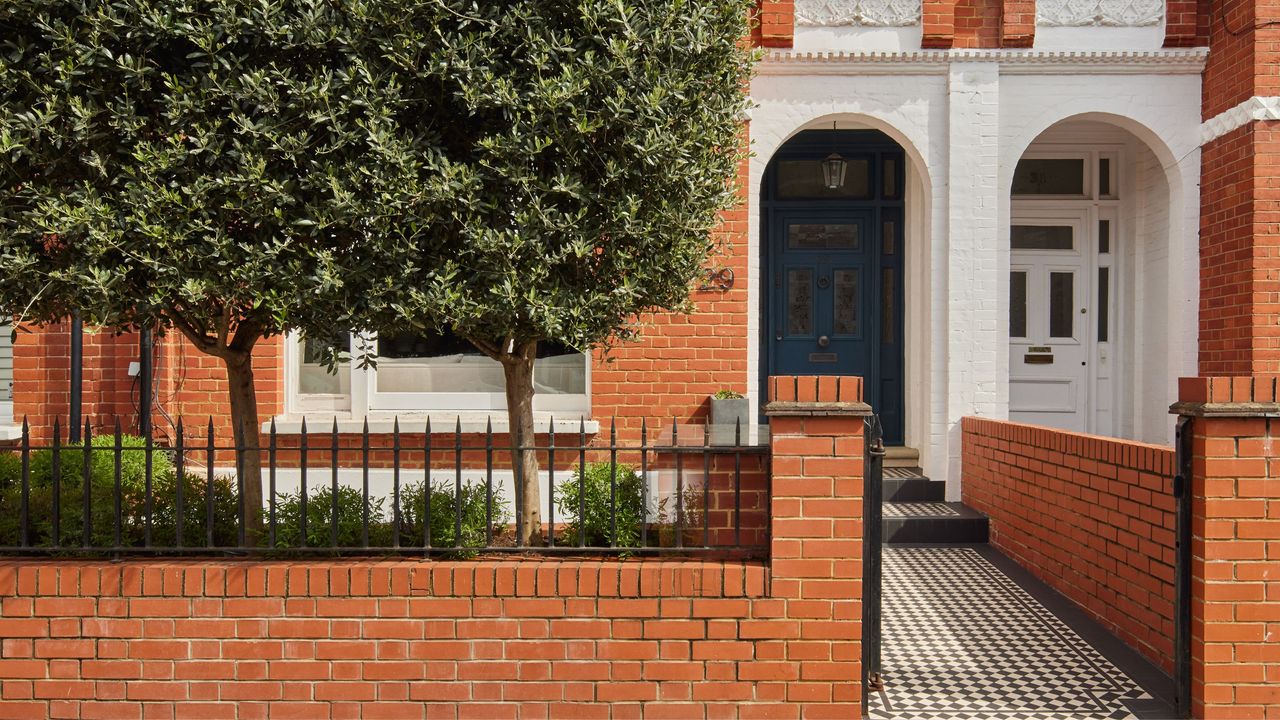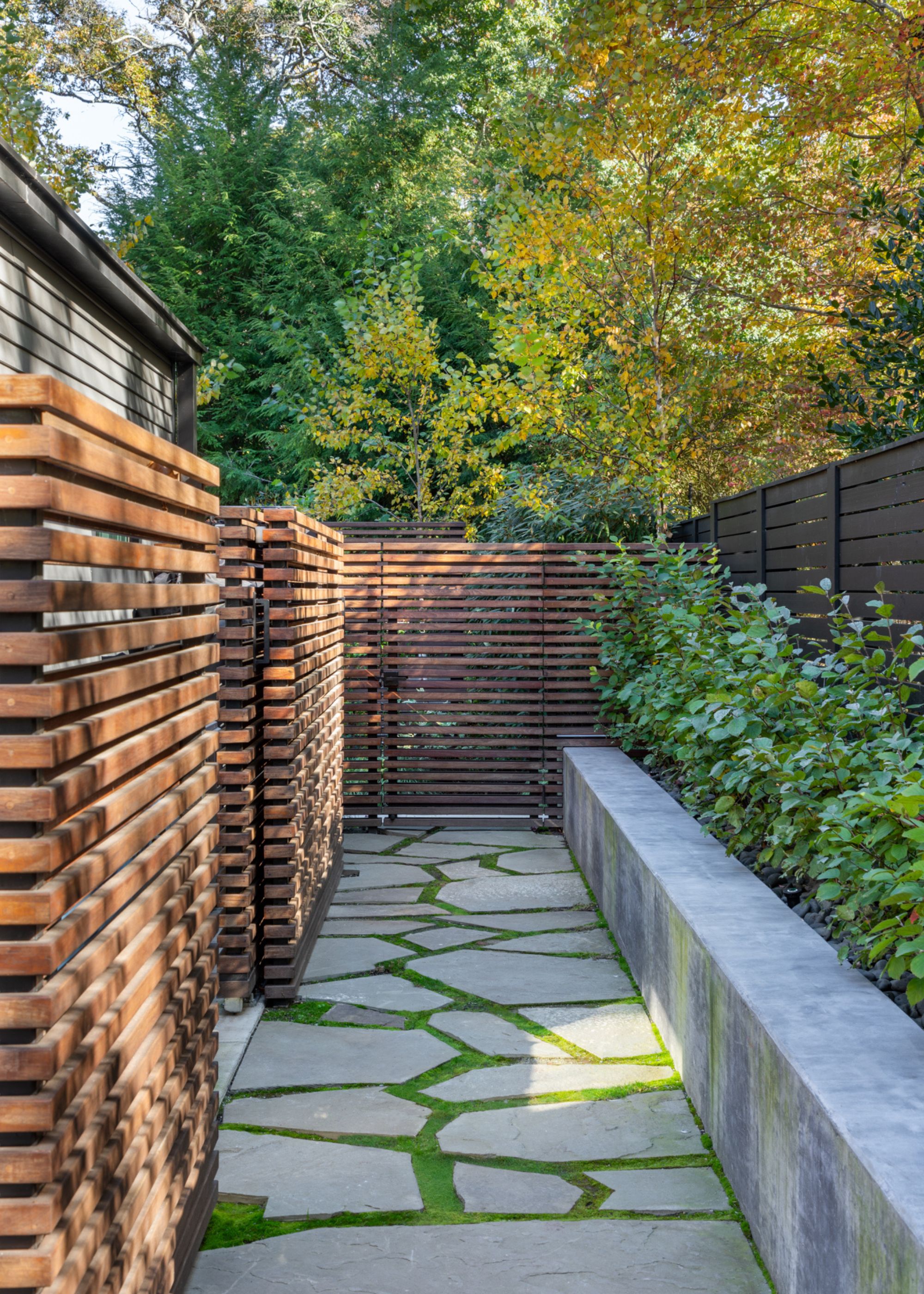
I mean, I get it, rubbish collection comes by every week, so the bins will have to come out at some point, but to avoid the eye-sore taking over your front garden and becoming a feast for the foxes on London's streets, you'll need to find the right ways to hide bins in a front garden for the rest of the week.
After all, you wouldn't want all your hard work and those front garden landscaping ideas to go to waste (pun intended). It can be quite a challenge hiding away bulky bins, but with the proper planting techniques and seamless garden storage ideas — there are a few tricks in the book that can certainly uplift and elevate your home's facade.
So, if you're wondering how to hide away bins in a front garden, I've got you covered. Here are a few tips and tricks from landscape and garden designers to get you started.
The Best Way to Hide a Bin

To blend your modern front yard with your home's overall aesthetic, it's always best to find simple hacks and solutions to keep eyesores, like large, bulky bins, hidden away. But how exactly can this be done? Well, Jordan Clough of Richardson & Associates Landscape Architecture in Washington, DC, says there are a few simple ways to do just that.
"When possible, it's best to tuck them around the side of the house, where they can still be screened if needed," Jordan tells me. "Often, a garage is situated in such a way that there can be a very short patch of paving to connect the trash storage area to the driveway paving, making it easy to get them to the curb." But if you want to elevate your curb appeal, you'll want to try to keep them disguised, while also keeping things practical and easy to reach.
Another simple way of hiding a bin, and that could just make the perfect front garden privacy idea, is a privacy screen. "A wood screening fence is always recommended," says Jordan. "This fence should be tall enough to hide the full height of the cans (usually 48", but it may need to be higher in some cases), and we frequently match this screening fence to the same style as any perimeter wood fencing, just making it a shorter version. The enclosure can also help contain things like oversized boxes and/or recycling bins, or hide utility meters."
Lastly, Jordan says, "If there is space, a screening hedge can be used. Shrubs such as Cherry Laurel, Dwarf Arborvitae cultivars, or other evergreen shrubs make a great screening hedge, and really help the enclosure blend into the rest of the landscaping." So, what are you waiting for? It's time to plant the best shrubs for privacy.
This light brown NÄmmarÖ Privacy Screen from IKEA is ideal for both indoor and outdoor use. Its freestanding feature makes it easier to support climbing plants and can also be used as a room divider. We love a multifunctional piece.
This two-pack of aluminum and rope garden screens from Sklum UK features and aluminum frame and has been powder coated to any type of weather change. Quite ideal for the unpredictable UK weather if you ask me, but best of all? It's stylish!
This Serrety Steel Garden Screen from La Redoute is portable and easy to use. Whether you're looking to hide your bins away or you simply want some privacy in your outdoor entertaining area, this piece is quite the feature.
So, What Are the Other Options?

And if you're still not satisfied or want ways to use what you already have in your front garden, landscape designer Trent Brown from Ground Break Design says you could do the following:
• Use a freestanding wall to hide those bulky bins. "Similar to fencing, it creates a beautiful courtyard feel in the front yard and if the home has any accent stone or brick, this can be a great opportunity to tie in some of those same materials from the home and make it feel like it was built at the same time as the home, instead of as an addition," explains Trent. "You can think about placing address numbers on this wall as a finishing touch."
• As Jordan stated above, privacy plants are a great way of maintaining the chic and hidden feel in your front garden, and Trent agrees. He tells me, "If the homeowner isn't looking to add structures like a fence to their yard, the same principle can be applied with planting. A hedge or a feature shrub can be a much softer look as opposed to a fence, and the homeowners can decide to maintain it at whatever height they desire. Cedars, Junipers, and Laurels make nice evergreen hedges, but there are lots of plants that would do the job, depending on which planting zone you live in. If you leave space in front of your fence, wall, or hedge, then they become great backdrops to place gardens in front of."
• Or, if that's not enough, you can opt for a bin enclosure, a small shed, or a little hidden storage solution to keep those bins at bay when not in use. "You can use the above strategies to hide the bin enclosure so it's not so obvious, but full enclosures are a great way to ensure the bins are never seen except for on collection day," says Trent. "They can also help deter wildlife from accessing the bins if that is a problem you deal with in your area."
Hiding bins can be quite the task in London, trust me, I totally get it. For some Londoners, even the simple task of storing away bikes can be pretty tricky, but not to worry, as Livingetc's editor, Hugh Metcalf, is here to help with all things bike storage. Here's what you need to know about how to store bikes in a front garden.







